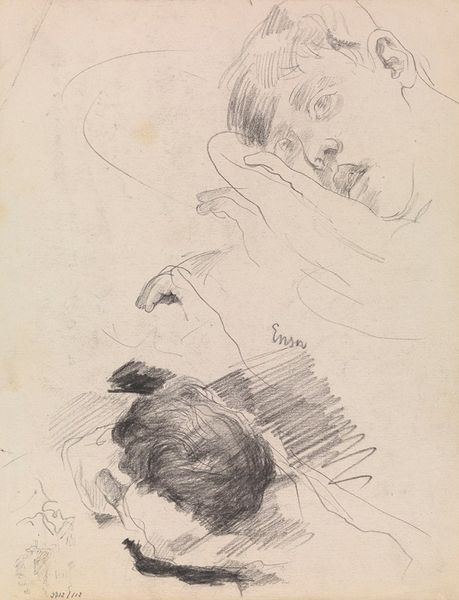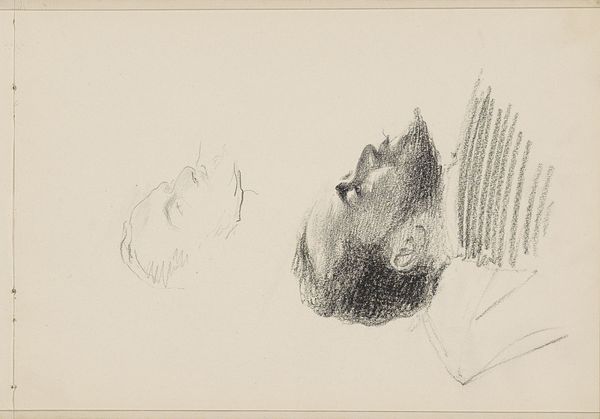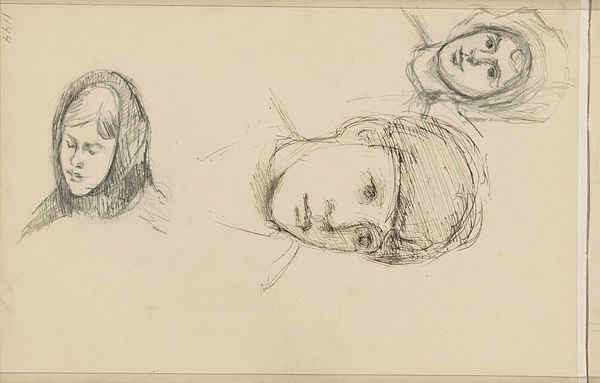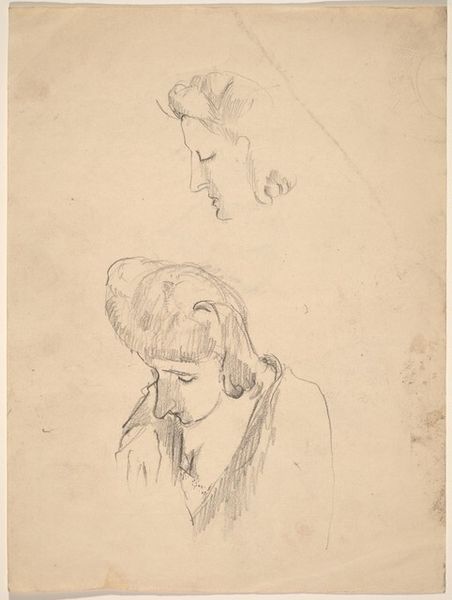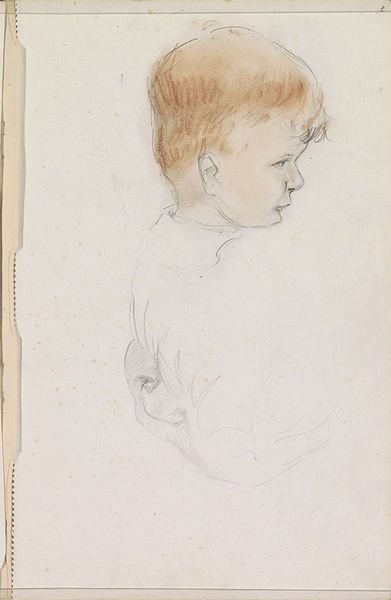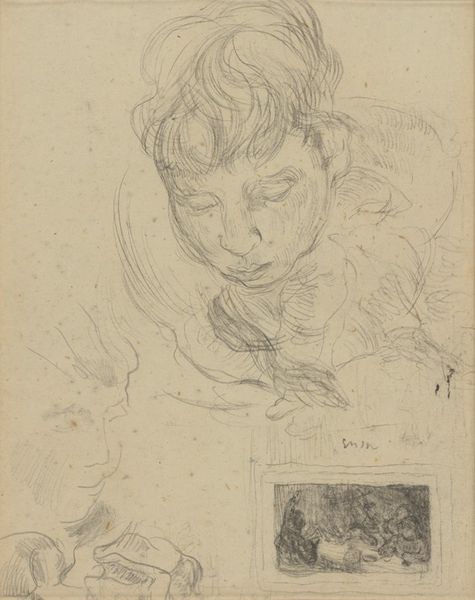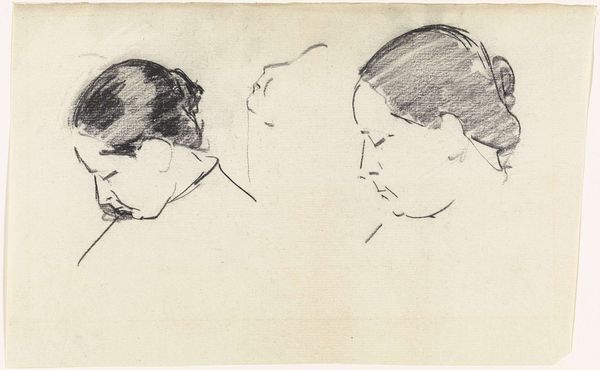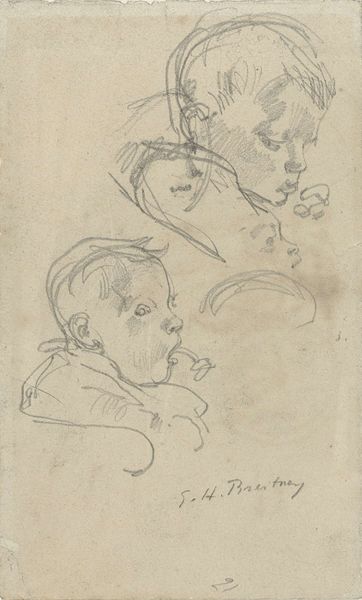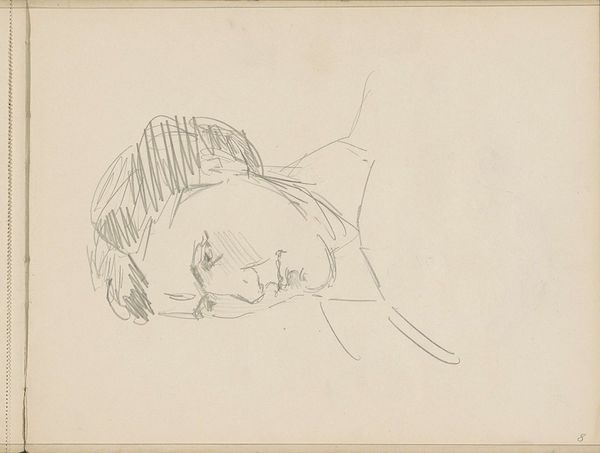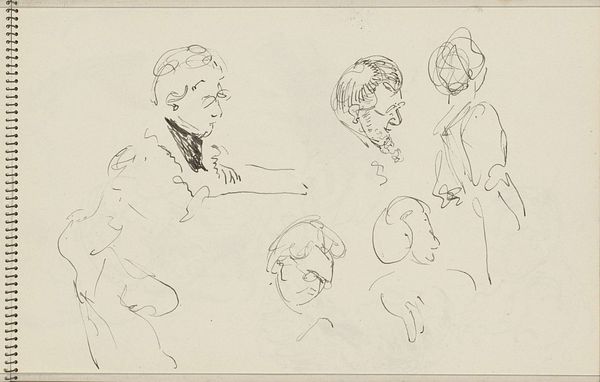![Profile of a Boy and Self-Portrait [recto] by Paul Gauguin](/_next/image?url=https%3A%2F%2Fd2w8kbdekdi1gv.cloudfront.net%2FeyJidWNrZXQiOiAiYXJ0ZXJhLWltYWdlcy1idWNrZXQiLCAia2V5IjogImFydHdvcmtzLzYyMzM0YTRmLWJjNjEtNGE5Yy1hNTZlLTAxZGRlOGVkYTI4MS82MjMzNGE0Zi1iYzYxLTRhOWMtYTU2ZS0wMWRkZThlZGEyODFfZnVsbC5qcGciLCAiZWRpdHMiOiB7InJlc2l6ZSI6IHsid2lkdGgiOiAxOTIwLCAiaGVpZ2h0IjogMTkyMCwgImZpdCI6ICJpbnNpZGUifX19&w=3840&q=75)
drawing, pencil
#
portrait
#
drawing
#
self-portrait
#
impressionism
#
pencil sketch
#
figuration
#
pencil drawing
#
pencil
#
portrait drawing
#
post-impressionism
Dimensions: overall: 16.9 x 11.6 cm (6 5/8 x 4 9/16 in.)
Copyright: National Gallery of Art: CC0 1.0
Editor: This is Paul Gauguin's "Profile of a Boy and Self-Portrait," created between 1884 and 1888 using pencil. The quick, almost hurried lines give it a very intimate, sketch-like quality. What do you see in this piece? Curator: Beyond the obvious representation, I see a layering of identities being negotiated. Gauguin, often critiqued for his colonial gaze and exoticization of the "other", is here juxtaposing himself with the innocent image of a child. Does this speak to the artist’s own conflicted positionality, caught between self-assured artistic persona and perhaps a more vulnerable, unformed identity? Editor: That's a really interesting point. I was so focused on the art itself, I hadn't considered his place in history like that. How does this reading challenge the traditional view of Gauguin as solely a post-impressionist artist? Curator: It invites us to dissect his motives. He abandoned his family, and, one might argue, embraced a romanticized idea of Tahiti at the expense of its inhabitants. Looking at this sketch, it seems pertinent to ask: Is there a level of self-awareness here, a hint of regret or understanding of his privilege, reflected in the contrast between the two profiles? Or is it further justification of an ego that needed to consume? Editor: So, by considering Gauguin's personal history, and the power dynamics in his life, we can look at this drawing with a critical eye, and consider how it may further emphasize this conflict. Curator: Exactly. This piece becomes more than just a portrait; it is an artefact in the study of identity, a cultural and political mirror reflecting complex social injustices. Editor: That adds so much depth to such a simple drawing. I see it so differently now. Curator: Hopefully it sparks reflection not just on Gauguin, but also how we, as viewers, engage with art and its complex legacy.
Comments
No comments
Be the first to comment and join the conversation on the ultimate creative platform.

